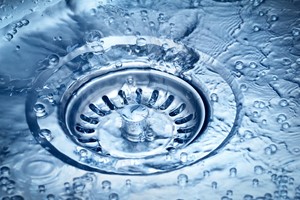 Whether new or old, many homes can have issues that aren’t obvious from photos. Many of the most common problems in a home have to do with the plumbing system. Since water can be so damaging, it’s especially important to get these issues out in the open prior to sale.
Whether new or old, many homes can have issues that aren’t obvious from photos. Many of the most common problems in a home have to do with the plumbing system. Since water can be so damaging, it’s especially important to get these issues out in the open prior to sale.
Some sellers might be aware of their plumbing issues, others may have no clue at all. Oftentimes, if a home was previously occupied by only one or two people who didn’t entertain many guests, they may not be aware of the strain that a larger family could have on things like the septic system.
In this article, we’ll cover some of the most common plumbing issues that a home has and help you identify these issues before you buy a new home.
The small fixes
Let’s start with some problems that are common and simple to address. When touring a home or performing an inspection, test all of the home’s faucets. Dripping faucets might not seem like a big issue, but the cost of wasted water can add up on your utility bill.
Leaking pipes are another issue that is seemingly harmless, but can lead to bigger problems that could cost thousands of dollars to repair. Check ceilings, floors, and underneath cabinets for signs of water damage.
Flush the toilets in the house to see if they continue running. Toilets that continue running water is often a simple fix, like replacing the chain or flapper in the tank. However, a leaking toilet could be symptomatic of a bigger problem that could include having to replace the toilet.
Sewer line and septic systems
Ask the owner about the history of the sewer or septic system. Find out if they’ve had problems recently and when the last time they were taken care of. If there is a septic tank or field on the property, look for signs of issues such as the grass having been dug out, water pooling in the yard, or foul smells in the area.
When it comes to septic and sewer issues, always reach out to a professional. They will be able to give you an accurate assessment and estimate of costs.
Inspect the pipes
Spot-checking the pipes in the home will tell you a lot about the state of the plumbing. Pipes that are old, worn, and lacking insulation are signs that plumbing issues could be coming. Rust is a major red flag. The water lines that lead out of the house for lawn faucets should also be wrapped to avoid freezing in the winter months.
Hot water heater
Just like the septic system, you’ll want to ask about the history of the home’s hot water heater. If it’s over ten years old, you might have to replace it soon after purchase.
You should also consider the size of the hot water heater. You’ll want to be sure it can accommodate your expected water usage. If children are in your future, having a bigger hot water heater might be something you want to plan for to avoid cold showers in the morning.
About the Author
